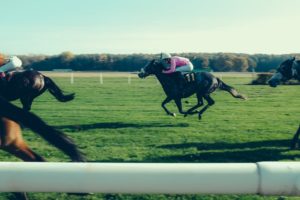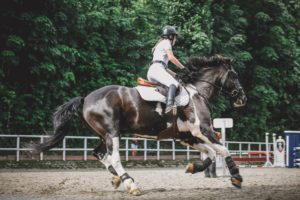Horse Racing Types Explained: Harness, Flat, Jumping, and More

If you are a novice to horse racing, it will sound as if there are dozens of different types of races. The jargon is quite confusing, and you may not be sure what type of race you are watching or betting on. Here are the main different types of races explained.
Harness
Harness racing means that the horse is made to move in a specific gait, either trotting or pacing. They will pull a buggy along too. This is a popular sport in Europe, America, and Australia.
Flat
Flat racing takes place on flat ground, hence the name. Visit racecourses such as Sandown Park, Newbury, Leicester, Ascot, and Worcestershire if you want to see flat racing. UK courses tend to use turf or synthetic grass for the track. However, in other countries, mud is also commonly used.
Flat racing is a test of speed and stamina, and it is run over a course of somewhere between 5 and 16 furlongs. A horse tends to be at its peak between 3 and 4 years old, as this is when it will be at its fastest. Flat racing tends to take place over the summer months between April and October.
These are prestigious races and have traditionally been supported by Royalty. The prize money can be a considerable sum. However, the horses are not at the peak of their careers for long, so they don’t have a lot of time to win money.
Classes
There are 7 different classes in flat racing, and these are numbered from 1-7. Generally, the lower the number the more prestigious the race and the harder it is for the horses and riders to qualify. However, the prize money tends to be a lot higher than for other races.
Conditions Racing
This is a type of flat race where horses must carry weight depending on their age and gender. This is done to try to create a more level playing field. Conditions races are held at all the different classification grades. However, all the European and Classic group races in Europe are conditions races.
Handicapped Racing
This is the most common type of flat racing. The idea of this type of race is that the horses all start as equals, and it is down to the horse and the jockey to give them the winning edge on the track. Horses will wear weight so that they are equal, and they are also given an official rating, which should help to place them equally. Their rating will denote how much weight they have to carry. For example, if they have won their last few races, they will have to carry more weight and if they are on a losing streak, they will have their weights reduced and their rating will go down.
They have a lot more competitors than other types of races as these are less strict about their entry criteria. The bigger the race, the more popular they are likely to be with betting enthusiasts who want to try to place an outside bet.
Jumping

Jumping is better known as National Hunt Racing in the UK. It takes place at the Cheltenham Festival in Cheltenham, Aintree (home of the Grand National), and around 60 other locations across the UK.
The horses are expected to jump fences, hedges, and ditches over a racecourse that is usually between 2.5 and 4 miles. Horses are usually slightly older for National Hunt than flat racing as they need to develop more muscle power. Jumpers are typically between the ages of 3 and 4. They have long race careers and can compete for well over 10 years. This means that they have a lot more time to win money than flat racehorses although the pay-out is a lot smaller and the races are not as grand.
Once you have read this guide and you have got your head around the different types of races and terminology, you are ready to start watching some races yourself or attend a race day at one of the famous racetracks. After all, there is no point in learning a new skill unless you go out and put it into practice. Good luck.
For all the latest sports news follow PledgeSports on Facebook, Twitter and Instagram.
